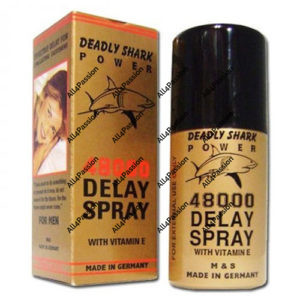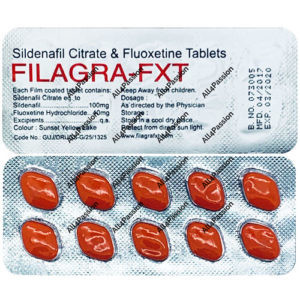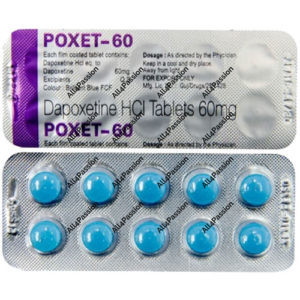Premature Ejaculation
Premature Ejaculation medication based on dapoxetine, it is used for treating premature ejaculation in males. Buy premature ejaculation products online. Free shipping!

Showing 1–16 of 28 results
-
Generic Viagra (Sildenafil Citrate), Premature Ejaculation
Original price was: €40.00.€20.00Current price is: €20.00. Get notified
Showing 1–16 of 28 results
Premature Ejaculation
Premature ejaculation (PE) occurs when a man experiences orgasm and expels semen within a few moments of beginning sexual activity and with minimal penile stimulation. It has also been called early ejaculation, rapid ejaculation, rapid climax, premature climax. There is no uniform cut-off defining “premature”, but a consensus of experts at the International Society for Sexual Medicine endorsed a definition of around one minute after penetration.
Although men with premature ejaculation describe feeling that they have less control over ejaculating, it is not clear if that is true, and many or most average men also report that they wish they could last longer. Men’s typical ejaculatory latency is approximately 4–8 minutes. The opposite condition is delayed ejaculation.
Men with premature ejaculation often report emotional and relationship distress, and some avoid pursuing sexual relationships because of premature ejaculation related embarrassment. Compared with men, women consider premature ejaculation less of a problem, but several studies show that the condition also causes female partners distress.
Premature Ejaculation Treatments
Several treatments have been tested for treating premature ejaculation. A combination of medication and non-medication treatments is often the most effective method.
Self-treatment
Many men attempt to treat themselves for premature ejaculation by trying to distract themselves, such as by trying to focus their attention away from the sexual stimulation. There is little evidence to indicate that it is effective and it tends to detract from the sexual fulfilment of both partners. Other self-treatments include thrusting more slowly, withdrawing the penis altogether, purposefully ejaculating before sexual intercourse, and using more than one condom. Using more than one condom is not recommended as the friction will often lead to breakage. Some men report these to have been helpful.
By the 21st century, most men with premature ejaculation could cure themselves, either on their own or with a partner, using self-help resources, and only those with unusually severe problems had to consult sex therapists, who cured 75 to 80 percent.
Psychoanalysis
Freudian theory postulated that rapid ejaculation was a symptom of underlying neurosis. It stated, that the man suffers unconscious hostility toward women, so he ejaculates rapidly, which satisfies him, but frustrates his lover, who is unlikely to experience orgasm that quickly. Freudians claimed, that premature ejaculation could be cured using psychoanalysis. But even years of psychoanalysis accomplished little, if anything, in curing premature ejaculation.
There is no evidence, that men with premature ejaculation harbor unusual hostility toward women.
Sex therapy
Several techniques have been developed and applied by sex therapists, including Kegel exercises (to strengthen the muscles of the pelvic floor) and Masters and Johnson’s “stop-start technique” (to desensitize the man’s responses) and “squeeze technique” (to reduce excessive arousal).
To treat premature ejaculation, Masters and Johnson developed the “squeeze technique”, based on the Semans technique developed by Dr. James Semans in 1956. Men were instructed to pay close attention to their arousal pattern and learn to recognize how they felt shortly before their “point of no return”, the moment ejaculation felt imminent and inevitable. Sensing it, they were to signal their partner, who squeezed the head of the penis between thumb and index finger, suppressing the ejaculatory reflex and allowing the man to last longer.
The squeeze technique worked, but many couples found it cumbersome. From the 1970s to the 1990s, sex therapists refined the Masters and Johnson approach, largely abandoning the squeeze technique and focused on a simpler and more effective technique called the “stop-start” technique. During intercourse, as the man senses he is approaching climax, both partners stop moving and remain still until the man’s feelings of ejaculatory inevitability subside, at which point, they are free to resume active intercourse.
These techniques appear to work for around half of people, in the short term studies that had been done as of 2017.
Medications
Drugs that increase serotonin signalling in the brain slow ejaculation and have been used successfully to treat premature ejaculation. These include selective serotonin reuptake inhibitors (SSRIs), such as paroxetine or dapoxetine, as well as clomipramine. Ejaculatory delay typically begins within a week of beginning medication. The treatments increase the ejaculatory delay to 6–20 times greater than before medication. Men often report satisfaction with treatment by medication, and many discontinue it within a year. However, selective serotonin reuptake inhibitors can cause various types of sexual dysfunction such as anorgasmia, erectile dysfunction, and diminished libido.
Dapoxetine is a short-acting selective serotonin reuptake inhibitors which appears to work when taken as needed for premature ejaculation. It is generally well tolerated. Tramadol, an atypical oral analgesic, appears to be effective.
Desensitizing topical medications like lidocaine that are applied to the tip and shaft of the penis can also be used. These are applied “as needed”, 10–15 minutes before sexual activity and have fewer potential systemic side effects as compared to pills. Use of topicals is sometimes disliked due to the reduction of sensation in the penis as well as for the partner (due to the medication rubbing onto the partner).




























